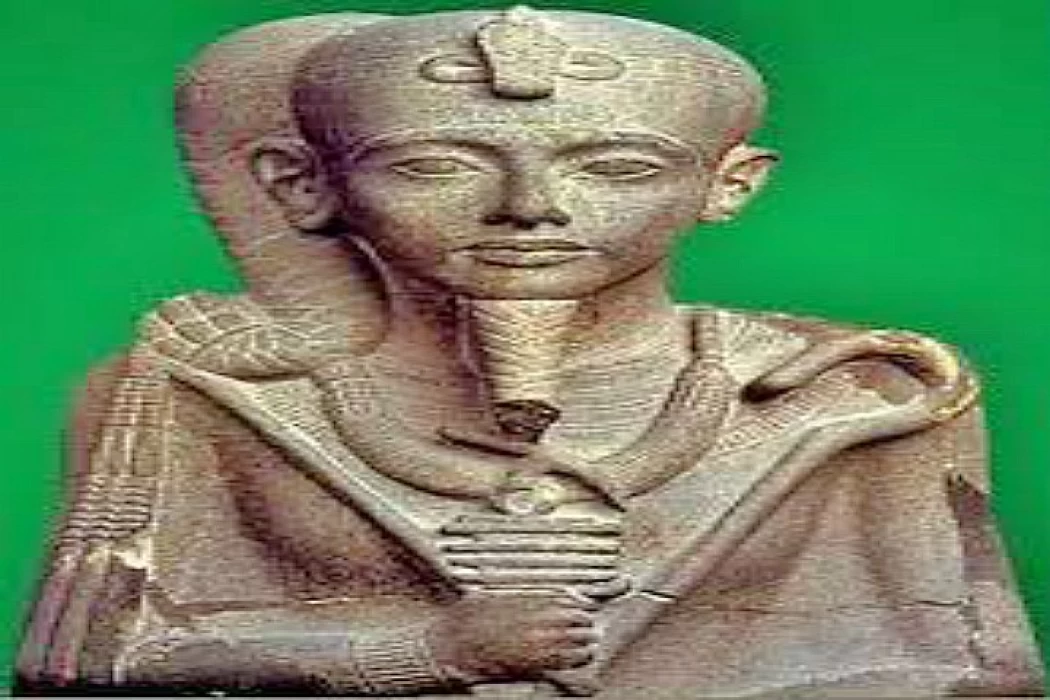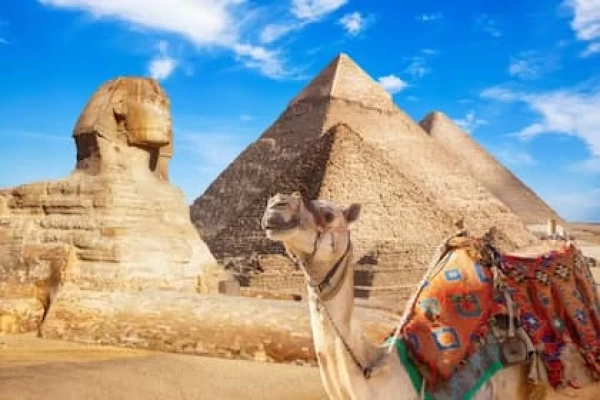
God Khonsu | God of the Moon
Facts About God Khonsu
Khonsu, also spelled Khons or Chons, is a moon god who was generally depicted as a youth and was known as Khonsu the Merciful, the destroyer of evil spirits and the god of healing. There is a god with astronomical connections called “Khenzu” from the Pyramid Texts (ca. 2350 BC) and may be the same as Khonsu in Egyptian mythology.
Khonsu was considered the son of the god Amun and the goddess Mut. In the late New Kingdom period (ca. 1100 BC), a temple was built Master of Khonsu in the Karnak Complex at Thebes Khonsu is generally depicted as a young man with a side-swept hair, and on his head he wore an uraeus (an upright cobra and a moon disk).
It was believed that Khonsu could influence the fertility of both people and their livestock and one legend recorded on the walls of the Ptolemaic temple of Khonsu at Karnak offers him a significant part in the universe's construction. He He was also venerated as a god of healing, as recorded in the story “Princess of Bekheten.” He personally healed Pharaoh Ptolemy IV, who took the title “Khonsu’s beloved who protects the king and exorcises evil spirits” thanks to Khonsu’s help. It was also believed to protect the common people.
The ancient Egyptian priests often divided their many gods into family groups of three, called triads. In ancient Thebes, the veneration of Amun gave rise to the triad known as the Theban Triad of Amun, Mut and Khonsu who would be worshiped in the city for centuries. Like Amun, the sun and the creative force, Mut was his wife and is symbolized by the rays of the sun and the eye that sees everything.
Khonsu the Moon, son of Amun and Mut, was known as Khonsu the Merciful, the destroyer of evil spirits and the god of healing. The popularity of these gods led directly to the development, wealth, and status of Thebes. The construction of the Karnak Temple dedicated to the worship of the Trinity began on this
Time is approximately (around 2055 BC), and the temple will continue to grow in size and grandeur over the next 2000 years as more and more details are added. The priests of Amun, who administered the temple rituals, were eventually so powerful that they would threaten the authority of the pharaoh, and by the Third Intermediate Period (1069–525), the priests of Amun would rule Upper Egypt from Thebes.
It is known that the ancient Egyptian civilization or the Pharaohs were associated with the worship of the moon, which was also known to have had three gods, and according to their seniority they are the god "Ah", meaning the moon god, then "Khonsu", which is a name that means wandering or traveling, and there is a temple for him called the Temple of the "Moon God" in Luxor, while the third god associated with the moon is the god "Thoth", the inventor of the lunar calendar.
In the texts of the pyramids and sarcophagi, he is mentioned as a rather cruel and even aggressive god, who was in charge of feeding the Egyptian gods and also helping the pharaoh by hunting and protecting him from evil geniuses.
God Khonsu is also known for being a god traveling at night, the skies in his boat. In what they call the Theban triad he appears as the son of Mut and Amun. He is regarded as a bearded man in a marching position as well as the ancient empire, capable of transforming into a child, he was even crowned by the crescent moon.
Carry a nail scepter and a necklace on his chest or hands. Furthermore, he has been represented as a man with the head of a hawk. Some called them the god that kept away evil spirits or as the healer god.
The main Temple of Khnum is located in Karnak, just inside the temple of the god Amun and in Kom Ombo they worshiped him as the son of Sobek and Hathor. This temple began to be built by Ramses III during the new kingdom and was finished in the Ptolemaic era.
Many beliefs attribute that he is known as a god who is related to time and that is why he carries a palm branch in his hands which he uses to measure the passage of time. He has assigned some epithets such as the bolt of youth, which is capable of piercing the traveler (already as a moon god).
The god (Khonsu) is considered the son of the god (Amun), and he was represented in the form of a man with the head of a falcon topped with a lunar disk. He also appeared in the form of a mummy or a child considered one of the moon gods, or a tight, tight robe. So his hands may be all or half untied. Above his head are the crescent and the moon, and a lock of hair hangs from his head. He usually receives a set of badges and scepters, which are (Haqqa, Was, Jad, Nakhkh).
The falcon's head is sometimes depicted as a heavenly distress, and is distinguished from the deities "Ra" and "Hor" by the moon disk and crescent.
He appears in the form of a human or a falcon, wearing a tight dress that covers his body. He carries a crescent moon on his head, surrounded by the full moon disk, and a braid hangs from the side of his head, indicating his role as a son in the Theban Trinity.
The baboon is considered one of his religious symbols as Lord of the Moon, although Khonsu himself is not often depicted as a monkey, unlike the god Chhuti, who is usually depicted as a monkey.
He has many titles: (Khonsu, the sublime in mind) (his Theban title) (His Highness) (Khonsu, the mastermind in Thebes) (the deity who expels evil spirits).
"The wanderer on the face" derives its name from the verb "khans" (xns) meaning (to cross), due to the moon crossing the sky. It is an act known to us from the "Pyramid Texts" in the paragraphs that refer to the moon crossing the sky.
That is, the name "Khonsu" means (the transient), and it is also a reference in the world of the dead to the deceased crossing the world, just like the moon. His name also means: (the one who travels); (the one who runs); (the one who moves); and (the one who passes).
He has a human figure with the moon sign above his head. As the son of "Amun and Mut".
Thebes is the main place of worship for the god Khonsu as a member of its trinity. However, many places of worship were found for him in many places throughout the country. His temple is within the scope of the Karnak temples from the era of King Ramesses III, and was expanded by a number of his successors.
Khonsu participated in many religious celebrations and holidays, such as (the beginning of the year), where his sacred statue was transported in a boat from his temple in Karnak to the Luxor Temple, where his parents Amun and Mut participated in the celebrations.















